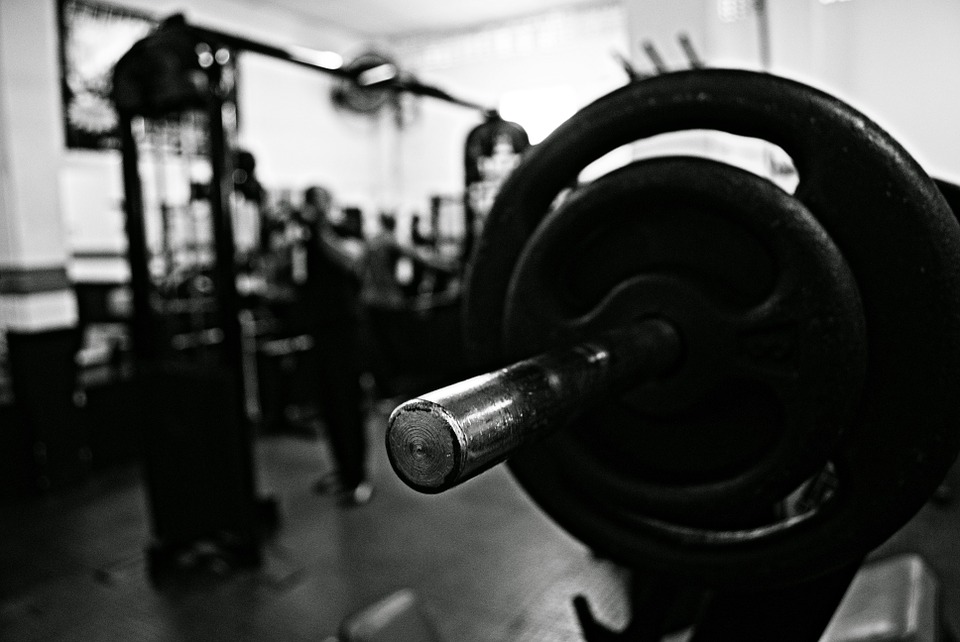Before you read this article, check out the other in the Performance Testing series, including Part 1: The Fundamentals of Testing; Part 2: Psychological tests, Part 3: Flexibility; Part 4: Body size and composition, and Part 5 on Muscle Power.
MMA involves a lot of wrestling and grappling, which requires a high degree of muscular strength. Strength is simply the maximal force a muscle can generate, and unlike muscular power, time is not a factor. There are lots of different ways to measure muscular strength. One of the best ways is to use an expensive piece of equipment called a dynamometer; but this isn’t very practical, so we’re going to show you how to assess muscular strength using a few common pieces of gym equipment. The first test of strength we’ll discuss is the bench press test; the second test is the squat. Note that before you attempt these tests you should have a solid base of strength training with good technique in both lifts, and at least two suitably trained spotters.
To predict your maximal upper body strength, you could use the 5 and 3 repetition maximum (RM) bench press test. To do this test you’ll need a typical bench press set-up, 2 spotters and safety clamps, and a data collection sheet.
To run this test have the participant take a 15-minute self-organised general warm-up and then familiarize them with the bench press technique. The participant will then perform a specific warm-up with a light resistance that they can easily complete for 5 to 10 repetitions. Following this they are to take about 1-minute rest. Next, estimate a load that will allow the participant to complete 3 to 5 repetitions (which ever test is chosen).
Participants are always expected to hold a solid technique during the testing process – TECHNIQUE AND SAFETY BEFORE PERFORMANCE!!
When the weight is set on the bar and the participant lies on the bench, the spotter will spot the applicant from behind. A second tester will position him/herself close to the bench. The participant is expected to perform as many repetitions with the set weight as possible: The bar should move smoothly and touch the chest at its lowest point. The bar should move over the chest, not pressed out of the shoulder. The arms should be completely extended on the highest point but not overstretch and breathing should be continuous. The whole back should always have contact with the bench during the motion.
The spotter is to help the participant put the weight back on the cradle and supports the participant if the movement gets stuck. If the spotter is required to intervene, the respective repetition does not count and no further reps are to be attempted at this point in time.
Record the number of repetitions with each given weight; even if a 5 RM attempt ended up being 6 or 4 reps. Evaluate the form/technique of the press against the criteria mentioned above on a scale from 1 – 3 (1 = beginner, 3 = excellent).
To assess lower body strength, you can complete a 5 and 3 RM Squat test. You’ll need a standard squat rack set up; 3 spotters, safety clamps, and a data collection sheet.
To run this test, have the participant take a 15-minute self-organized general warm-up and then familiarize them with the Squatting technique. The participant will then perform a specific warm-up with a light resistance that they can easily complete for 5 to 10 repetitions. Following this they are to take about 1-minute rest. Next, estimate a load that will allow the participant to complete 3 to 5 repetitions (which ever test is chosen).
Remember, participants are always expected to hold a solid technique during the testing process – TECHNIQUE AND SAFETY BEFORE PERFORMANCE!!
When the weight is set on the bar and the applicant is standing under the bar, the tester will spot the applicant from behind. The two other testers will position themselves to the left and right of the bar.
The participant is expected to perform as many repetitions with the set weight as possible. The bar should move smoothly through the entire movement. If not agreed otherwise with the participant, a full squat should be performed, i.e. with hips parallel to the knees. If only a half squat is performed (90° knee angle), this is to be noted on the evaluation sheet. The back of the applicant should always be straight or in a slight hollow back position. Breathing should be continuous. The spotter is to help the participant in putting the weight back on the cradle. The spotter will support the applicant if the movement get stuck. If the spotter is required to intervene, the respective repetition does not count and no further reps are to be attempted at this point in time.
Document the number of repetitions with each given weight, even if a 5 RM attempt ended up being 6 or 4 reps. Evaluate the form/technique of the squat against the criteria mentioned above on a scale from 1 – 3 (1 = beginner, 3 = excellent).
Download the MMA Training Bible’s data collection book here. This will allow you to record your data and chart your progress on this test and all of the other tests described in this article series.
Take Care,
Dr. Gillis
Next time we’ll be exploring how to assess muscle endurance, so stay tuned.

Leave a Reply